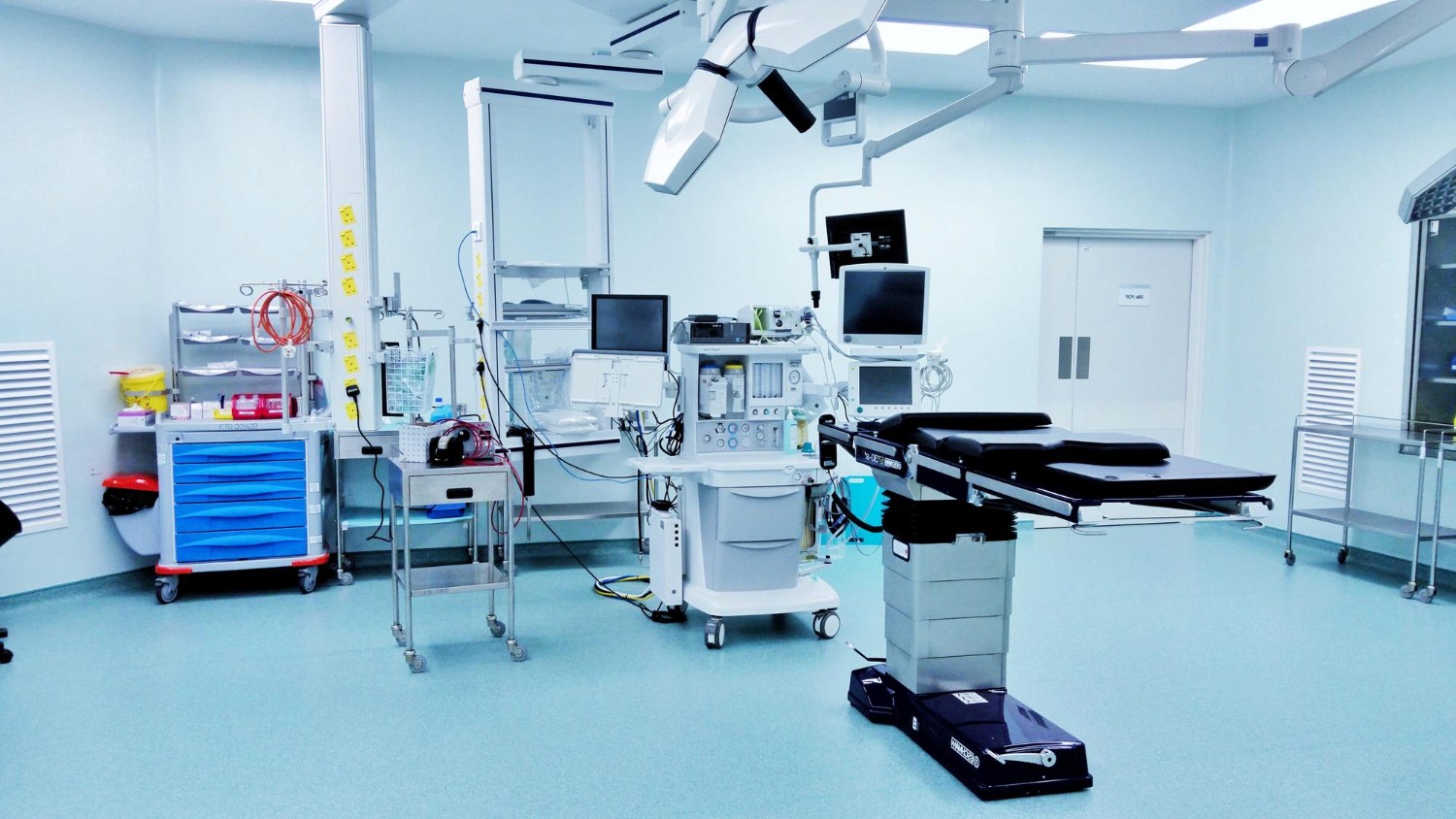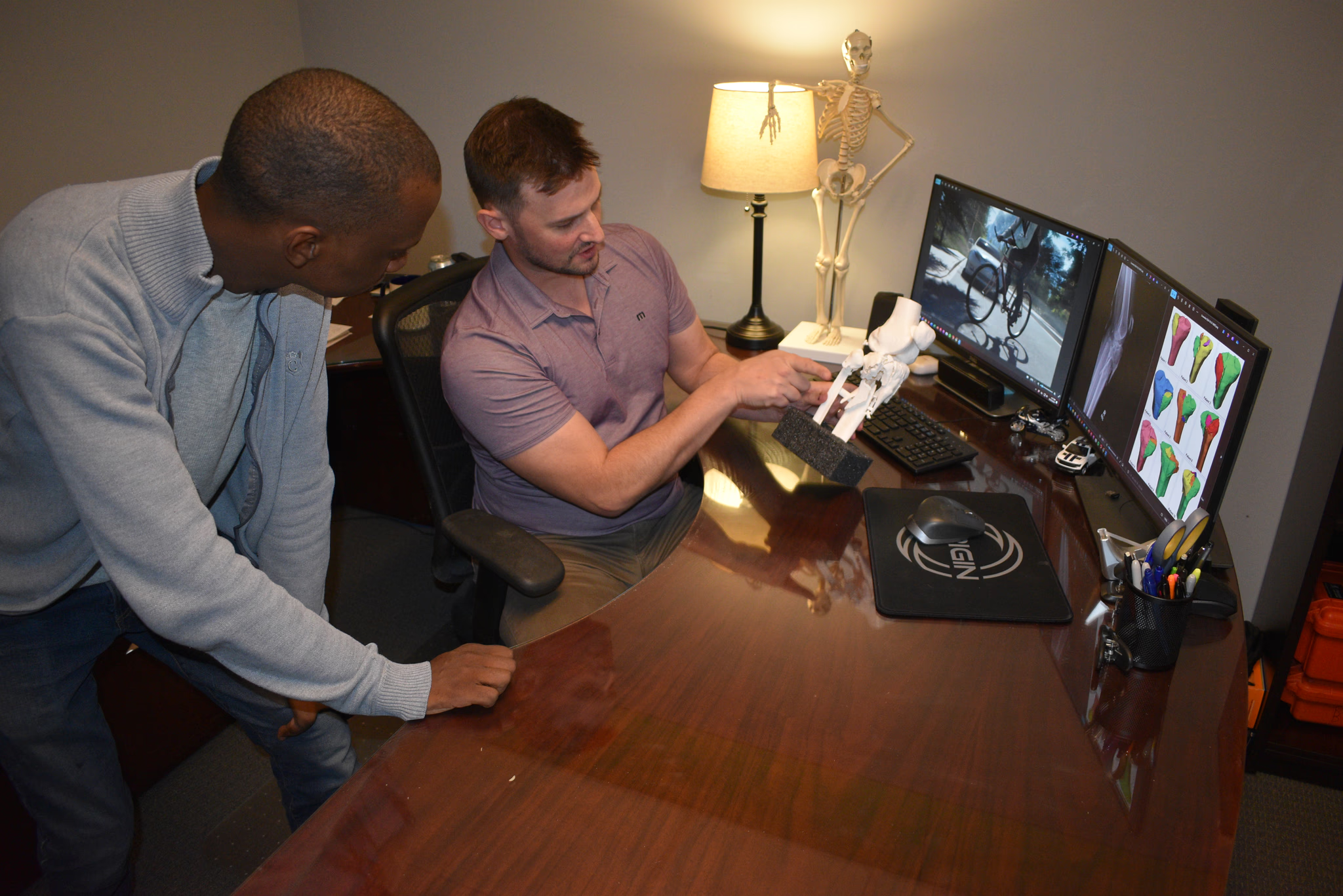
Bio/Medical Q & A
Bio/Medical Q & A
Jeffrey Brown, Ph. D.
Jeffrey Brown, Ph. D.



Decoding Medical Device Mishaps: Insights from Forensic Engineering Experts
We at Compass Consulting Engineers have compiled some questions and answers around this particular area of expertise and we hope you will find it helpful.
What is a Medical Device?
A medical device subject to FDA regulation is defined in the Food, Drug, and Cosmetic Act section 201(h)(1) as an instrument, apparatus, implement, machine, contrivance, implant, in vitro reagent, or other similar or related article, including a component part, or accessory which is:
(A) recognized in the official National Formulary, or the United States Pharmacopoeia, or any supplement to them,
(B) intended for use in the diagnosis of disease or other conditions, or in the cure, mitigation, treatment, or prevention of disease, in man or other animals, or
(C) intended to affect the structure or any function of the body of man or other animals, and which does not achieve its primary intended purposes through chemical action within or on the body of man or other animals and which is not dependent upon being metabolized for the achievement of its primary intended purposes. The term "device" does not include software functions excluded pursuant to section 360j(o).
Medical devices range from complex MRI machines to simple tongue depressors. Devices are classified as Class I, II, or III based on the risks the device poses. The regulatory controls in place for devices are based on this classification, with Class I being considered the lowest risk and thus have the lowest regulatory hurdles.
What is Human cell, tissue, or cellular or tissue-based product (HCT/P)?
HCT/P are defined in 21CFR Part 1271 as articles containing or consisting of human cells or tissues that are intended for implantation, transplantation, infusion, or transfer into a human recipient. Examples of HCT/Ps include, but are not limited to, bone, ligament, skin, dura mater, heart valve, cornea, hematopoietic stem/progenitor cells derived from peripheral and cord blood, manipulated autologous chondrocytes, epithelial cells on a synthetic matrix, and semen or other reproductive tissue.
Exceptions to the above definition include:
(1) Vascularized human organs for transplantation;
(2) Whole blood or blood components or blood derivative products subject to listing under parts 607 and 207 of this chapter, respectively;
(3) Secreted or extracted human products, such as milk, collagen, and cell factors; except that semen is considered an HCT/P;
(4) Minimally manipulated bone marrow for homologous use and not combined with another article (except for water, crystalloids, or a sterilizing, preserving, or storage agent, if the addition of the agent does not raise new clinical safety concerns with respect to the bone marrow);
(5) Ancillary products used in the manufacture of HCT/P;
(6) Cells, tissues, and organs derived from animals other than humans; and
(7) In vitro diagnostic products as defined in § 809.3(a) of this chapter.
(8) Blood vessels recovered with an organ, as defined in 42 CFR 121.2, that are intended for use in organ transplantation and labeled “For use in organ transplantation only.”
HCT/P’s are regulated under section 361 of the Public Health Service Act if all of the following criteria are met:
(1) The HCT/P is minimally manipulated;
(2) The HCT/P is intended for homologous use only, as reflected by the labeling, advertising, or other indications of the manufacturer's objective intent;
(3) The manufacture of the HCT/P does not involve the combination of the cells or tissues with another article, except for water, crystalloids, or a sterilizing, preserving, or storage agent, provided that the addition of water, crystalloids, or the sterilizing, preserving, or storage agent does not raise new clinical safety concerns with respect to the HCT/P; and
(4) Either:
(i) The HCT/P does not have a systemic effect and is not dependent upon the metabolic activity of living cells for its primary function; or
(ii) The HCT/P has a systemic effect or is dependent upon the metabolic activity of living cells for its primary function, and:
(a) Is for autologous use;
(b) Is for allogeneic use in a first-degree or second-degree blood relative; or
(c) Is for reproductive use.
What is a biologic or biological product?
The Center for Biologics Evaluation and Research (CBER) states:
Biological products include a wide range of products such as vaccines, blood and blood components, allergenics, somatic cells, gene therapy, tissues, and recombinant therapeutic proteins. Biologics can be composed of sugars, proteins, or nucleic acids or complex combinations of these substances, or may be living entities such as cells and tissues. Biologics are isolated from a variety of natural sources - human, animal, or microorganism - and may be produced by biotechnology methods and other cutting-edge technologies. Gene-based and cellular biologics, for example, often are at the forefront of biomedical research, and may be used to treat a variety of medical conditions for which no other treatments are available.
How does the FDA regulate biologics?
CBER regulates HCT/Ps under 21CFR Parts 1270 and 1271. Biological products that do not meet the criteria of being an HCT/P will be regulated either as a medical device by 21CFR Part 8xx, or by 21CFR parts 210/211 and part 6xx, which represent higher regulatory hurdles. One exception is the transplantation of vascularized human organ transplants such as kidney, liver, heart, lung, or pancreas; these are regulated by the Health Resources Services Administration (HRSA).
What are stem cells and are they regulated by the FDA?
The definition of a stem cell varies according to the source and has evolved over time. A commonly accepted definition is the one provided by the International Society for Cell & Gene Therapy (ISCT). It says: “A stem cell is an undifferentiated cell that has the remarkable ability to divide and produce offspring cells…that can either continue as stem cells or differentiate into specialized cells with specific functions.”
Stem cells and stem cell products are regulated by the FDA and the agency is cracking down on unapproved stem cell therapies. See: U.S. stem cell clinics boomed while FDA paused crackdown | PBS NewsHour ; Consumer Alert on Regenerative Medicine Products Including Stem Cells and Exosomes | FDA . A list of warning letters sent to companies from FDA regarding their stem cell therapies can be found here by searching for “stem cell”: Warning Letters | FDA
A list of approved Cellular and Gene Therapy products approved by the FDA can be found at: Approved Cellular and Gene Therapy Products | FDA
What are the types of stem cells?
Stem cells can generally be classified by the age of the donor organism, the differentiation capacity of the cells, and the types of cells and tissue that the stem cells can give rise to (differentiated cells and tissues).
Age. Stem cells isolated from embryonic sources such as the inner cell mass of an embryo are called “Embryonic.” Stem cells isolated from older individuals, typically 18 years or older, are called “Adult Stem Cells.”
Differentiation Capacity. Stem cells that have the ability to give rise to all embryonic and adult cell types are called totipotent. The only cells that are totipotent are embryonic cells within the first couple of cell divisions following fertilization. Stem cells that can give rise to all adult cell types are pluripotent. Examples are embryonic cells that differentiate into each of the three primary germ layers. Stem cells that can give rise to just multiple cells in a given lineage are called multipotent. Examples include adipose-derived mesenchymal stromal cells.
Differentiated Cells and Tissues. Stem cells that can give rise to non-blood tissues such as muscle, adipose, and bone are called mesenchymal, whereas stem cells which give rise to blood cells such as red and white bloods cells and platelets are called hematopoietic.
What are exosomes and are they regulated by the FDA?
Exosomes are a subtype of extracellular vesicles (EV). EV are bilayer lipid membrane-bound cell secretions used to direct a variety of cell and tissue functions. They contain a wide variety of cargo including lipids, RNA, DNA, and proteins. While EVs generally range from a few micrometers or smaller in diameter, exosomes are typically 30-150 nm in diameter.
What are good manufacturing practices (GMP)?
Good manufacturing practices, in relation to medical devices, drugs, or biopharmaceuticals, are regulations for manufacturers that are enforced by the FDA. These regulations cover controls and methods used in the design, manufacture, and distribution of products. These measures generally require complete documentation of all processes from design to shipment of finished goods including monitoring and control of processes, adequate facility upkeep measures, and proper verification and validation. See 21 CFR Part 210 for Drugs, Part 211 for Pharmaceuticals, and Part 820 for medical devices.
Decoding Medical Device Mishaps: Insights from Forensic Engineering Experts
We at Compass Consulting Engineers have compiled some questions and answers around this particular area of expertise and we hope you will find it helpful.
What is a Medical Device?
A medical device subject to FDA regulation is defined in the Food, Drug, and Cosmetic Act section 201(h)(1) as an instrument, apparatus, implement, machine, contrivance, implant, in vitro reagent, or other similar or related article, including a component part, or accessory which is:
(A) recognized in the official National Formulary, or the United States Pharmacopoeia, or any supplement to them,
(B) intended for use in the diagnosis of disease or other conditions, or in the cure, mitigation, treatment, or prevention of disease, in man or other animals, or
(C) intended to affect the structure or any function of the body of man or other animals, and which does not achieve its primary intended purposes through chemical action within or on the body of man or other animals and which is not dependent upon being metabolized for the achievement of its primary intended purposes. The term "device" does not include software functions excluded pursuant to section 360j(o).
Medical devices range from complex MRI machines to simple tongue depressors. Devices are classified as Class I, II, or III based on the risks the device poses. The regulatory controls in place for devices are based on this classification, with Class I being considered the lowest risk and thus have the lowest regulatory hurdles.
What is Human cell, tissue, or cellular or tissue-based product (HCT/P)?
HCT/P are defined in 21CFR Part 1271 as articles containing or consisting of human cells or tissues that are intended for implantation, transplantation, infusion, or transfer into a human recipient. Examples of HCT/Ps include, but are not limited to, bone, ligament, skin, dura mater, heart valve, cornea, hematopoietic stem/progenitor cells derived from peripheral and cord blood, manipulated autologous chondrocytes, epithelial cells on a synthetic matrix, and semen or other reproductive tissue.
Exceptions to the above definition include:
(1) Vascularized human organs for transplantation;
(2) Whole blood or blood components or blood derivative products subject to listing under parts 607 and 207 of this chapter, respectively;
(3) Secreted or extracted human products, such as milk, collagen, and cell factors; except that semen is considered an HCT/P;
(4) Minimally manipulated bone marrow for homologous use and not combined with another article (except for water, crystalloids, or a sterilizing, preserving, or storage agent, if the addition of the agent does not raise new clinical safety concerns with respect to the bone marrow);
(5) Ancillary products used in the manufacture of HCT/P;
(6) Cells, tissues, and organs derived from animals other than humans; and
(7) In vitro diagnostic products as defined in § 809.3(a) of this chapter.
(8) Blood vessels recovered with an organ, as defined in 42 CFR 121.2, that are intended for use in organ transplantation and labeled “For use in organ transplantation only.”
HCT/P’s are regulated under section 361 of the Public Health Service Act if all of the following criteria are met:
(1) The HCT/P is minimally manipulated;
(2) The HCT/P is intended for homologous use only, as reflected by the labeling, advertising, or other indications of the manufacturer's objective intent;
(3) The manufacture of the HCT/P does not involve the combination of the cells or tissues with another article, except for water, crystalloids, or a sterilizing, preserving, or storage agent, provided that the addition of water, crystalloids, or the sterilizing, preserving, or storage agent does not raise new clinical safety concerns with respect to the HCT/P; and
(4) Either:
(i) The HCT/P does not have a systemic effect and is not dependent upon the metabolic activity of living cells for its primary function; or
(ii) The HCT/P has a systemic effect or is dependent upon the metabolic activity of living cells for its primary function, and:
(a) Is for autologous use;
(b) Is for allogeneic use in a first-degree or second-degree blood relative; or
(c) Is for reproductive use.
What is a biologic or biological product?
The Center for Biologics Evaluation and Research (CBER) states:
Biological products include a wide range of products such as vaccines, blood and blood components, allergenics, somatic cells, gene therapy, tissues, and recombinant therapeutic proteins. Biologics can be composed of sugars, proteins, or nucleic acids or complex combinations of these substances, or may be living entities such as cells and tissues. Biologics are isolated from a variety of natural sources - human, animal, or microorganism - and may be produced by biotechnology methods and other cutting-edge technologies. Gene-based and cellular biologics, for example, often are at the forefront of biomedical research, and may be used to treat a variety of medical conditions for which no other treatments are available.
How does the FDA regulate biologics?
CBER regulates HCT/Ps under 21CFR Parts 1270 and 1271. Biological products that do not meet the criteria of being an HCT/P will be regulated either as a medical device by 21CFR Part 8xx, or by 21CFR parts 210/211 and part 6xx, which represent higher regulatory hurdles. One exception is the transplantation of vascularized human organ transplants such as kidney, liver, heart, lung, or pancreas; these are regulated by the Health Resources Services Administration (HRSA).
What are stem cells and are they regulated by the FDA?
The definition of a stem cell varies according to the source and has evolved over time. A commonly accepted definition is the one provided by the International Society for Cell & Gene Therapy (ISCT). It says: “A stem cell is an undifferentiated cell that has the remarkable ability to divide and produce offspring cells…that can either continue as stem cells or differentiate into specialized cells with specific functions.”
Stem cells and stem cell products are regulated by the FDA and the agency is cracking down on unapproved stem cell therapies. See: U.S. stem cell clinics boomed while FDA paused crackdown | PBS NewsHour ; Consumer Alert on Regenerative Medicine Products Including Stem Cells and Exosomes | FDA . A list of warning letters sent to companies from FDA regarding their stem cell therapies can be found here by searching for “stem cell”: Warning Letters | FDA
A list of approved Cellular and Gene Therapy products approved by the FDA can be found at: Approved Cellular and Gene Therapy Products | FDA
What are the types of stem cells?
Stem cells can generally be classified by the age of the donor organism, the differentiation capacity of the cells, and the types of cells and tissue that the stem cells can give rise to (differentiated cells and tissues).
Age. Stem cells isolated from embryonic sources such as the inner cell mass of an embryo are called “Embryonic.” Stem cells isolated from older individuals, typically 18 years or older, are called “Adult Stem Cells.”
Differentiation Capacity. Stem cells that have the ability to give rise to all embryonic and adult cell types are called totipotent. The only cells that are totipotent are embryonic cells within the first couple of cell divisions following fertilization. Stem cells that can give rise to all adult cell types are pluripotent. Examples are embryonic cells that differentiate into each of the three primary germ layers. Stem cells that can give rise to just multiple cells in a given lineage are called multipotent. Examples include adipose-derived mesenchymal stromal cells.
Differentiated Cells and Tissues. Stem cells that can give rise to non-blood tissues such as muscle, adipose, and bone are called mesenchymal, whereas stem cells which give rise to blood cells such as red and white bloods cells and platelets are called hematopoietic.
What are exosomes and are they regulated by the FDA?
Exosomes are a subtype of extracellular vesicles (EV). EV are bilayer lipid membrane-bound cell secretions used to direct a variety of cell and tissue functions. They contain a wide variety of cargo including lipids, RNA, DNA, and proteins. While EVs generally range from a few micrometers or smaller in diameter, exosomes are typically 30-150 nm in diameter.
What are good manufacturing practices (GMP)?
Good manufacturing practices, in relation to medical devices, drugs, or biopharmaceuticals, are regulations for manufacturers that are enforced by the FDA. These regulations cover controls and methods used in the design, manufacture, and distribution of products. These measures generally require complete documentation of all processes from design to shipment of finished goods including monitoring and control of processes, adequate facility upkeep measures, and proper verification and validation. See 21 CFR Part 210 for Drugs, Part 211 for Pharmaceuticals, and Part 820 for medical devices.

LET’S WORK TOGETHER
We’re looking forward to hearing how we can help.
Call our office at 720-458-9190 or click below.
TELL US ABOUT YOUR CASE


LET’S WORK TOGETHER
We’re looking forward to hearing how we can help.
Call our office at 720-458-9190 or click below.
TELL US ABOUT YOUR CASE


LET’S WORK TOGETHER
We’re looking forward to hearing how we can help.
Call our office at 720-458-9190 or click below.
TELL US ABOUT YOUR CASE
COMPASS
CONSULTING
ENGINEERS
EXPERTS IN FORENSIC ENGINEERING
& ACCIDENT RECONSTRUCTION
Compass Consulting Engineers, P.C.
10875 Dover St., # 900 Westminster, CO 80021
COMPASS
CONSULTING
ENGINEERS
EXPERTS IN FORENSIC ENGINEERING
& ACCIDENT RECONSTRUCTION
Compass Consulting Engineers, P.C.
10875 Dover St., # 900 Westminster, CO 80021
COMPASS
CONSULTING
ENGINEERS
EXPERTS IN FORENSIC ENGINEERING
& ACCIDENT RECONSTRUCTION
Compass Consulting Engineers, P.C.
10875 Dover St., # 900 Westminster, CO 80021